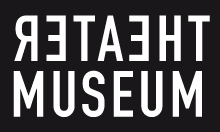Early visions – A narrative in dialogue with the Theatre Museum in Vienna
Neue Residenz – 1. Obergeschoss
Labyrinth, text labels with quotes, audio stations, plans of festival theatres, diverse documents and materials on festival ideas for Salzburg
A labyrinth symbolizes the meandering paths taken since the mid-19th century on the way to founding the Salzburg Festival in 1920.
The first performance of Jedermann / Everyman in August 1920 on Domplatz struck up the overture to the Salzburg Festival. The pre-history is fascinating: many ideas for festivals in the city where Mozart was born had been doing the rounds since the mid-19th century. Summer music festivals had been held since 1877. Soon plans were being forged for a Mozart Festival in Salzburg after the model of the Wagner Festival in Bayreuth. In 1890, the architects Ferdinand Fellner and Hermann Helmer designed a grandiose Mozart Festival Theatre on Mönchsberg for this purpose. Further plans for festival theatres in Salzburg followed. From 1913 on, there was a lot of support above all for the Salzburg Festival Theatre Association headed by Friedrich Gehmacher and Heinrich Damisch. In 1917, a lively exchange started with the theatre director Max Reinhardt, who had much success in Berlin. Afterwards, Hugo von Hofmannsthal and later also Richard Strauss, Alfred Roller and Franz Schalk were involved in the further planning. Max Reinhardt wanted to implement a ‘European peace project’ under the aegis of the arts. Meanwhile, however, other personalities had their own ideas. Before the start of the Festival in 1920, Salzburg resonated with a confused buzz of voices.
Glossary
In terms of organization, the Theatre Museum belongs to the Kunsthistorisches Museum and has been housed in the Palais Lobkowitz in Vienna since 1991. The Theatre Museum combines under its roof its own holdings and the theatre collection (founded in 1922) of the Austrian National Library, and also the collection of the former Vienna State Opera Museum. With parts of Max Reinhardt’s estate and important inventories formerly belonging to the authors Hermann Bahr and Stefan Zweig, and also to the Burgtheater actor and director Hugo Thimig, the Theatre Museum holds key archival material from the early period of the Salzburg Festival.
Friedrich Gehmacher (born in 1866 in Frankenmarkt, Upper Austria; died in 1942 in Salzburg) was a lawyer; as member of the Supervisory Board and later President of the International Mozarteum Foundation he played an important role in the building of the new Mozarteum and the purchase of Mozart’s birthplace on Getreidegasse. In 1917, Gehmacher, together with Heinrich Damisch in Vienna, founded the Salzburg Festival Society, which triggered the decisive impulse for starting the Salzburg
Festival.
Heinrich Damisch (born in 1872 in Vienna; died in 1961 in Salzburg) studied piano, music theory and composition and worked at first as music editor and music consultant. Together with Friedrich Gehmacher, Damisch developed the plan for the Salzburg Festival Society founded in Vienna in 1917 and headed the latter as chief executive member of the management until its relocation to Salzburg in 1925. During the Nazi period, Damisch was a prominent protagonist in cultural life and contributed
greatly to the instrumentalization of Mozart by the Nazi authorities.
Richard Strauss (born in 1864 in Munich; died in 1949 in Garmisch-Partenkirchen) was an important German composer, conductor and theatre director. From 1919, Strauss directed the Vienna State Opera together with Franz Schalk and played a major role in founding the Salzburg Festival. He was its President from 1922 to 1924. Strauss conducted Mozart’s Don Juan in 1922, the first operatic performance at the Festival. With works such as Der Rosenkavalier / The Knight of the Rose he shaped the
musical identity of the Salzburg Festival. Two of Strauss’s operas had their world premières in Salzburg: Die ägyptische Helena / The Egyptian Helen and Die Liebe der Danae / The Love of Danae. Strauss remained connected to Salzburg the whole of his life. In the Nazi period, too, he was one of Adolf Hitler’s highly esteemed artists and a central personality of the Salzburg Festival.
Alfred Roller (born in 1864 in Brno, Moravia; died in 1935 in Vienna) was an Austrian painter, graphic artist and set designer. Roller was one of the founders of the Salzburg Festival and contributed to its successful development with his set designs. His approach was one of seeking a synthesis of the arts, a ‘Gesamtkunstwerk’. He aimed at the effective synthesis of space, colour and light with music, word and gesture. Roller worked very closely together with Gustav Mahler, and later with Richard Strauss and Max Reinhardt.
Franz Schalk (born in 1863 in Vienna; died in 1931 in Reichenau an der Rax) was an Austrian conductor and long-time director of the Vienna State Opera. In this function, he had a share in founding the Salzburg Festival and frequently took to the rostrum in the early years as a conductor.




